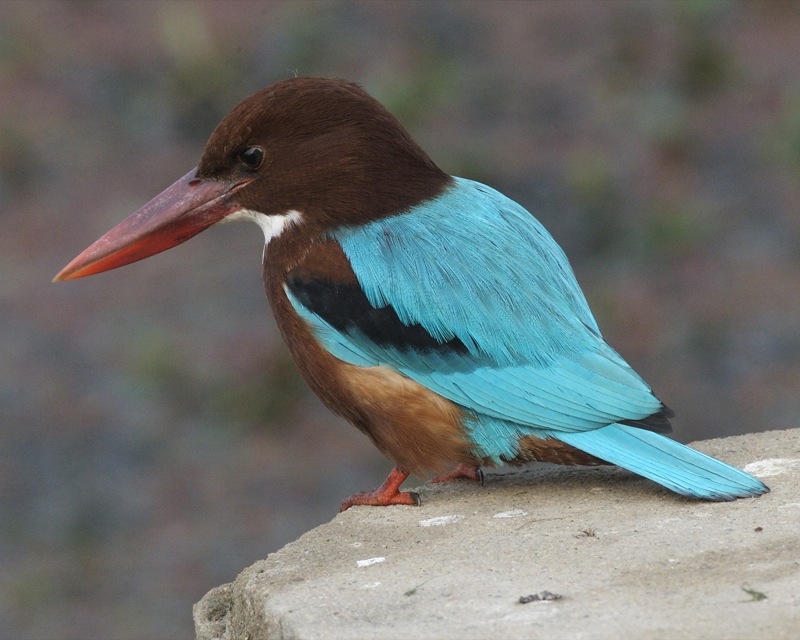|
Doğa
Doğa (meaning ''nature'' in Turkish) or Birdlife Turkey is an organisation which defends the rights of nature in Turkey, both birds and biodiversity in general. It is the Turkish partner of BirdLife International, and a member of the International Union for Conservation of Nature. Erciyes University helped with the national bird observations database Kuşbank, which is part of eBird. See also KuzeyDoğa KuzeyDoğa (Northeastern Nature) is a Turkish conservation non-governmental organization operating primarily in the far eastern section of the country, with a focal area ranging from the shores of the Black Sea to Mount Ağrı (Ararat). Histor ... References {{Reflist Nature conservation organizations based in Turkey BirdLife partners ... [...More Info...] [...Related Items...] OR: [Wikipedia] [Google] [Baidu] |
KuzeyDoğa
KuzeyDoğa (Northeastern Nature) is a Turkish conservation non-governmental organization operating primarily in the far eastern section of the country, with a focal area ranging from the shores of the Black Sea to Mount Ağrı (Ararat). History The organization was initially created in 2003 as the Kars-Iğdır Biodiversity Project by the biology professor Çağan H. Şekercioğlu, who subsequently founded KuzeyDoğa in January 2008. Since 2006, the organization placed motion-triggered cameras to capture the wildlife in the Eastern Anatolian region (project 'Animal Corridor'). A bird research and education center was established in the Aras Valley at the village Yukarı Çıyrıklı (one of Turkey's two bird ringing stations that remain active yearly). Starting in 2011, KuzeyDoğa became the first organization to track wolves in Turkey. In January 2012, the Ministry of Forest and Water Management created the country's first wildlife corridor in the Northeastern Anatolia reg ... [...More Info...] [...Related Items...] OR: [Wikipedia] [Google] [Baidu] |
Nonprofit Organization
A nonprofit organization (NPO), also known as a nonbusiness entity, nonprofit institution, not-for-profit organization, or simply a nonprofit, is a non-governmental (private) legal entity organized and operated for a collective, public, or social benefit, as opposed to an entity that operates as a business aiming to generate a Profit (accounting), profit for its owners. A nonprofit organization is subject to the non-distribution constraint: any revenues that exceed expenses must be committed to the organization's purpose, not taken by private parties. Depending on the local laws, charities are regularly organized as non-profits. A host of organizations may be non-profit, including some political organizations, schools, hospitals, business associations, churches, foundations, social clubs, and consumer cooperatives. Nonprofit entities may seek approval from governments to be Tax exemption, tax-exempt, and some may also qualify to receive tax-deductible contributions, but an enti ... [...More Info...] [...Related Items...] OR: [Wikipedia] [Google] [Baidu] |
Non-governmental Organization
A non-governmental organization (NGO) is an independent, typically nonprofit organization that operates outside government control, though it may get a significant percentage of its funding from government or corporate sources. NGOs often focus on humanitarian or social issues but can also include clubs and associations offering services to members. Some NGOs, like the World Economic Forum, may also act as lobby groups for corporations. Unlike international organizations (IOs), which directly interact with sovereign states and governments, NGOs are independent from them. The term as it is used today was first introduced in Article 71 of the UN Charter, Article 71 of the newly formed United Nations Charter in 1945. While there is no fixed or formal definition for what NGOs are, they are generally defined as nonprofit entities that are independent of governmental influence—although they may receive government funding. According to the United Nations Department of Global Communic ... [...More Info...] [...Related Items...] OR: [Wikipedia] [Google] [Baidu] |
Wildlife Of Turkey
The wildlife of Turkey is abundant and diverse. Turkey is a large country with many geographic and climatic regions and a great diversity of plants and animals, each suited to its own particular habitat. About 1,500 species of vertebrates and 19,000 species of invertebrates have been recorded in the country. Some of the world's staple crops were first cultivated in this area and many of their wild relatives are still found here. The country acts as a crossroads for many birds during migration, connecting Europe, Asia, and the Near East. Biomes and ecoregions Flora Fauna Threats Threats to biodiversity include desertification due to climate change in Turkey, which is forecast to move the ecoregions northwards, and large scale infrastructure projects such as those near Istanbul. Land degradation threatens biodiversity loss, and water scarcity is also a problem. Küre and Kaçkar Mountains National Parks have been suggested for rewilding. Several marine fish and mammals have ... [...More Info...] [...Related Items...] OR: [Wikipedia] [Google] [Baidu] |
List Of Birds Of Turkey
This is a list of the bird species recorded in Turkey. The avifauna of Turkey include a total of 495 species, of which 90 have occurred accidentally and 4 have been Introduced species, introduced by humans. The official checklist of birds of Turkey is maintained by the Turkish Bird Records Committee, which receives and reviews the submitted records via eBird. This list's Taxonomy (biology), taxonomic treatment (designation and sequence of orders, families and species) and nomenclature (common and scientific names) follow the conventions of ''The Clements Checklist of Birds of the World'', 2022 edition. The family accounts at the beginning of each heading reflect this taxonomy, as do the species counts in each family account. Introduced and accidental species are included in the total counts for Turkey. The following tags have been used to highlight several categories. The commonly occurring native species do not fall into any of these categories. *(A) Vagrancy (biology), Acci ... [...More Info...] [...Related Items...] OR: [Wikipedia] [Google] [Baidu] |
Biodiversity
Biodiversity is the variability of life, life on Earth. It can be measured on various levels. There is for example genetic variability, species diversity, ecosystem diversity and Phylogenetics, phylogenetic diversity. Diversity is not distributed evenly on Earth. It is greater in the tropics as a result of the warm climate and high primary productivity in the region near the equator. Tropical forest ecosystems cover less than one-fifth of Earth's terrestrial area and contain about 50% of the world's species. There are latitudinal gradients in species diversity for both marine and terrestrial taxa. Since Abiogenesis, life began on Earth, six major mass extinctions and several minor events have led to large and sudden drops in biodiversity. The Phanerozoic aeon (the last 540 million years) marked a rapid growth in biodiversity via the Cambrian explosion. In this period, the majority of Multicellular organism, multicellular Phylum, phyla first appeared. The next 400 mil ... [...More Info...] [...Related Items...] OR: [Wikipedia] [Google] [Baidu] |
BirdLife International
BirdLife International is a global partnership of non-governmental organizations that strives to conserve birds and their habitats. BirdLife International's priorities include preventing extinction of bird species, identifying and safeguarding important sites for birds, maintaining and restoring key bird habitats, and empowering conservationists worldwide. It has a membership of more than 2.5 million people across List of BirdLife International national partner organisations, 116 country partner organizations, including the Royal Society for the Protection of Birds, the Wild Bird Society of Japan, the National Audubon Society, and American Bird Conservancy. BirdLife International has identified 13,000 Important Bird Area, Important Bird and Biodiversity Areas and is the official International Union for Conservation of Nature's IUCN Red List, Red List authority for birds. BirdLife International has established that 1,375 bird species (13% of the total) are threatened with extinc ... [...More Info...] [...Related Items...] OR: [Wikipedia] [Google] [Baidu] |
International Union For Conservation Of Nature
The International Union for Conservation of Nature (IUCN) is an international organization working in the field of nature conservation and sustainable use of natural resources. Founded in 1948, IUCN has become the global authority on the status of the natural world and the measures needed to safeguard it. It is involved in data gathering and analysis, research, field projects, advocacy, and education. IUCN's mission is to "influence, encourage and assist societies throughout the world to conserve nature and to ensure that any use of natural resources is equitable and ecologically sustainable". Over the past decades, IUCN has widened its focus beyond conservation ecology and now incorporates issues related to sustainable development in its projects. IUCN does not itself aim to mobilize the public in support of nature conservation. It tries to influence the actions of governments, business and other stakeholders by providing information and advice and through building partners ... [...More Info...] [...Related Items...] OR: [Wikipedia] [Google] [Baidu] |
Erciyes University
Erciyes University (), commonly referred to as ERU, is a public research university located in Kayseri, Turkey. Established in 1978, the university has become a center for education, research, and innovation, contributing to academic and scientific development in the region. Erciyes University was designated by the Council of Higher Education as one of the first 10 universities in Turkey to be classified as a research university, and it was the only institution outside of Istanbul, Ankara, and İzmir. History Erciyes University originated from the Gevher Nesibe Medical School, established in 1969 as an affiliate of Hacettepe University, and the Kayseri Business School, founded in 1977. These faculties combined to form an independent institution under the name University of Kayseri in 1978. In 1982, the university expanded with the incorporation of two additional higher education institutions in Kayseri, the Faculty of Engineering and the Faculty of Theology. Shortly after, the ... [...More Info...] [...Related Items...] OR: [Wikipedia] [Google] [Baidu] |
EBird
eBird is an online database of bird observations providing scientists, researchers and amateur naturalists with real-time data about bird distribution and abundance. Originally restricted to sightings from the Western Hemisphere, the project expanded to include New Zealand in 2008, and again expanded to cover the whole world in June 2010. eBird has been described as an ambitious example of enlisting amateurs to gather data on biodiversity for use in science. eBird is an example of crowdsourcing, and has been hailed as an example of democratizing science, treating citizens as scientists, allowing the public to access and use their own data and the collective data generated by others. History and purpose Launched in 2002 by the Cornell Lab of Ornithology at Cornell University and the National Audubon Society, eBird gathers basic data on bird abundance and distribution at a variety of spatial and temporal scales. It was mainly inspired by the , created by Jacques Larivée ... [...More Info...] [...Related Items...] OR: [Wikipedia] [Google] [Baidu] |
Nature Conservation Organizations Based In Turkey
Nature is an inherent character or constitution, particularly of the ecosphere or the universe as a whole. In this general sense nature refers to the laws, elements and phenomena of the physical world, including life. Although humans are part of nature, human activity or humans as a whole are often described as at times at odds, or outright separate and even superior to nature. During the advent of modern scientific method in the last several centuries, nature became the passive reality, organized and moved by divine laws. With the Industrial Revolution, nature increasingly became seen as the part of reality deprived from intentional intervention: it was hence considered as sacred by some traditions (Rousseau, American transcendentalism) or a mere decorum for divine providence or human history (Hegel, Marx). However, a vitalist vision of nature, closer to the pre-Socratic one, got reborn at the same time, especially after Charles Darwin. Within the various uses of the word t ... [...More Info...] [...Related Items...] OR: [Wikipedia] [Google] [Baidu] |





